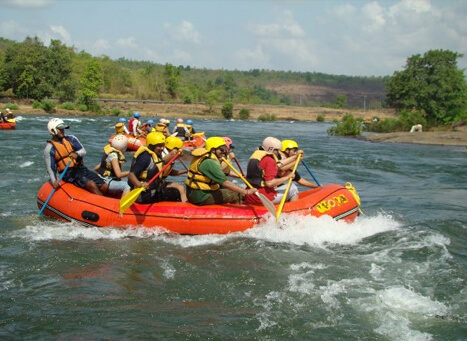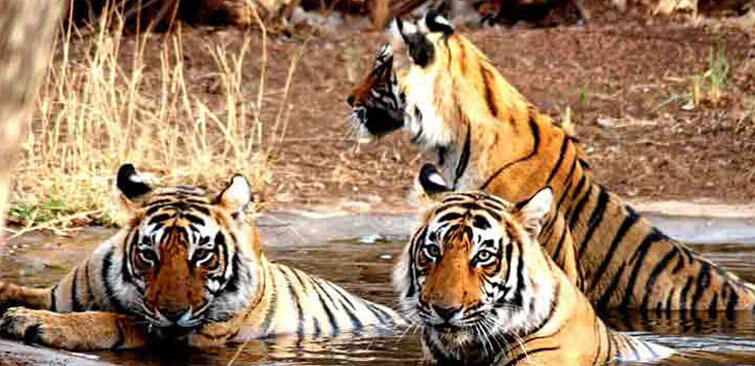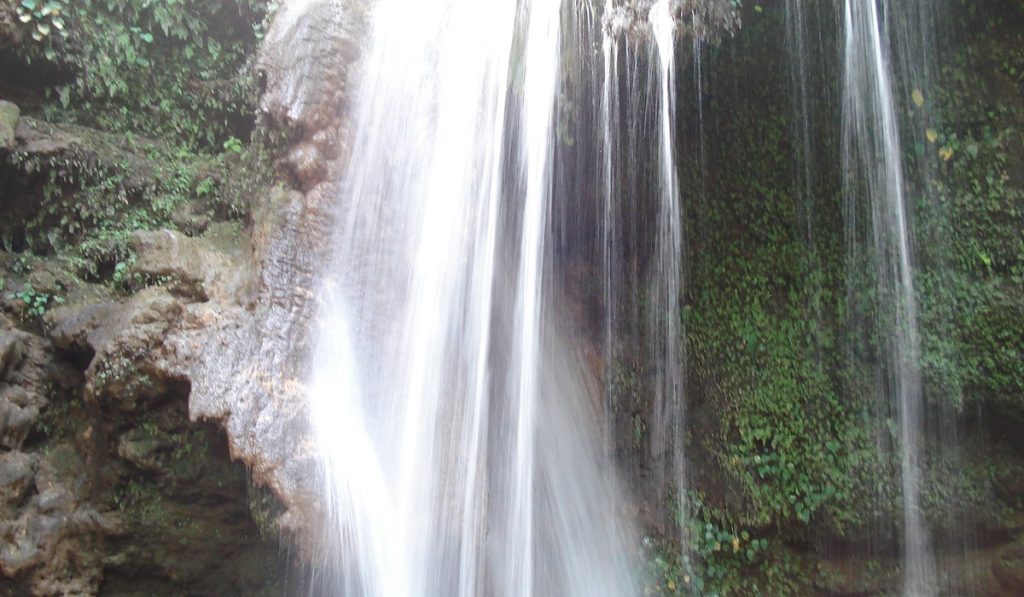Peak climbing offers adventure and challenge for outdoor enthusiasts. It’s a thrilling way to conquer nature’s heights.
Peak climbing combines the excitement of mountaineering with the skills needed for rock climbing. It’s not just about reaching the summit; it’s about the journey, the preparation, and the physical and mental endurance required. Whether you’re a seasoned climber or a beginner, peak climbing can push your limits and reward you with breathtaking views and a sense of accomplishment.
This activity is growing in popularity, attracting adventurers from all over the world. Are you ready to explore the peaks and test your abilities? Let’s delve into the world of peak climbing, where the mountains await your ascent and the adventure never ends.
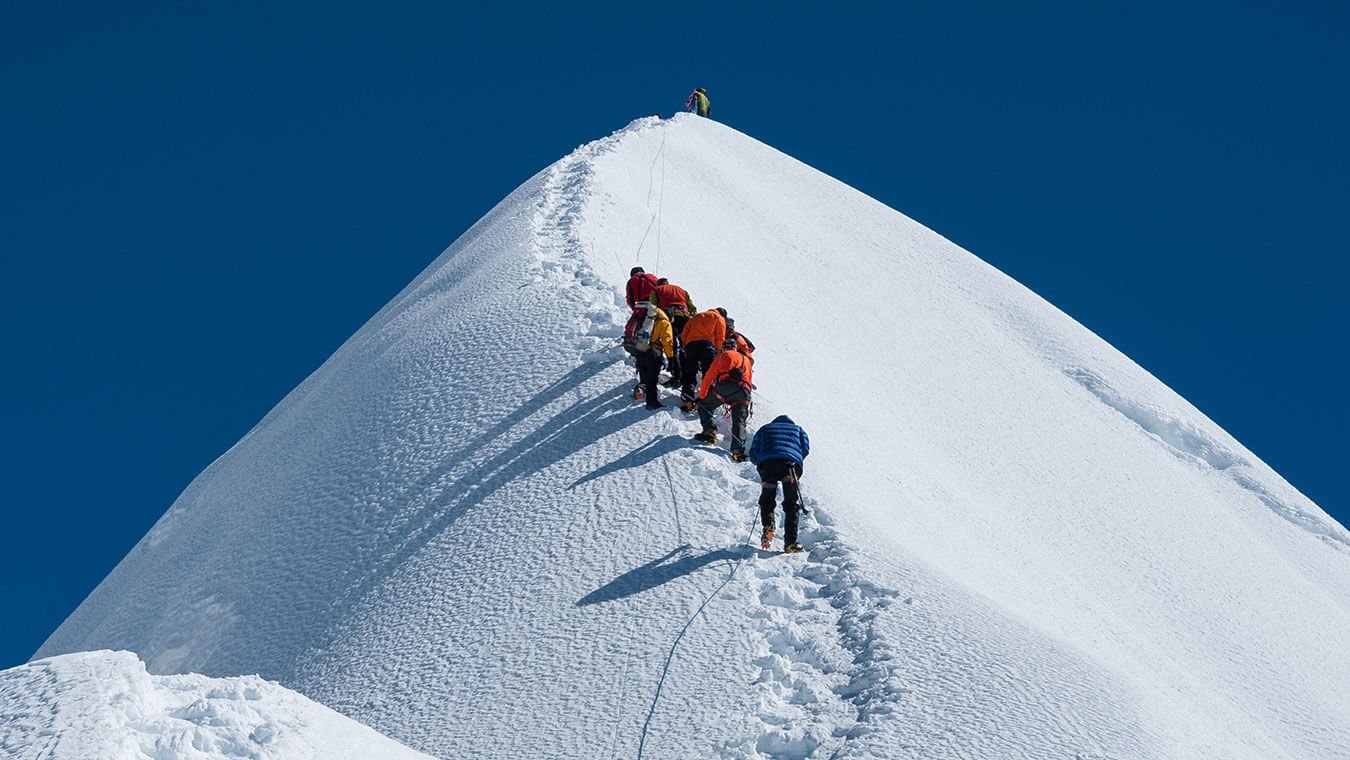
Credit: www.thirdrockadventures.com
Introduction To Peak Climbing
Peak climbing offers an exhilarating blend of adventure and personal accomplishment. Imagine standing atop a majestic peak, surrounded by breathtaking landscapes, feeling a sense of triumph. Whether you’re an experienced climber or a passionate beginner, the journey to the summit provides a unique challenge that tests your limits and rewards you with unforgettable memories. Let’s delve deeper into what makes peak climbing such a captivating endeavor.
Thrill Of Summiting
The thrill of summiting a peak is unparalleled. The physical effort, mental determination, and the sheer beauty of nature combine to create an unforgettable experience. When you reach the top, the sense of achievement is immense. You realize that every step, every struggle, was worth it. The view from the summit is often breathtaking, offering a panoramic perspective that few get to see.
Imagine yourself on a climb where you face unpredictable weather, challenging terrains, and your own doubts. Each obstacle you overcome makes the final moments at the summit even more precious. The thrill lies not just in the destination but also in the journey. The camaraderie with fellow climbers, the shared experiences, and the stories exchanged around a campfire add layers of richness to the adventure.
Have you ever thought about how overcoming a mountain peak could change your perspective on life’s challenges?
Historical Significance
Peak climbing has a rich history that dates back centuries. Many peaks around the world have been climbed for exploration, scientific research, and sheer adventure. The historical significance of these climbs adds a layer of meaning to the experience.
For instance, the first ascent of Mount Everest by Sir Edmund Hillary and Tenzing Norgay in 1953 was a monumental achievement. It inspired generations of climbers to pursue their own dreams of summiting the world’s highest peaks. These historical climbs are often celebrated, with climbers retracing the steps of pioneers to honor their legacy.
Understanding the historical context of peak climbing can deepen your appreciation of the sport. It connects you to a lineage of adventurers who dared to push the boundaries of what was possible.
Have you ever wondered what motivates climbers to follow in the footsteps of these legendary pioneers?
Peak climbing is more than just a physical challenge; it’s a journey of discovery, adventure, and personal growth. Whether you’re drawn by the thrill of summiting or the historical significance, each climb offers a chance to explore new heights—both literally and figuratively.
Essential Gear
When it comes to peak climbing, the right gear can make or break your adventure. As someone who’s spent countless hours scaling heights, I can vouch for the importance of having the right equipment at your disposal. Imagine being halfway up a peak and realizing you’ve forgotten a crucial piece of gear—that’s a situation you want to avoid at all costs. Here’s a comprehensive look at the essential gear you’ll need for a successful peak climbing expedition.
Climbing Equipment
Your climbing equipment is the backbone of your peak climbing experience. Think of these items as your best friends during the climb.
- Climbing Harness: This keeps you securely attached to your rope. Make sure it’s comfortable and well-fitted.
- Carabiners: These metal loops are essential for clipping into ropes and gear. You’ll need a mix of locking and non-locking carabiners.
- Belay Device: Used for controlling the rope during the climb. An ATC (Air Traffic Controller) or a GriGri are popular choices.
- Climbing Rope: A dynamic rope is ideal as it absorbs the impact of a fall. Ensure it’s long enough for your planned routes.
- Ice Axe: Essential for steep ascents and descents. It helps with balance and can be used for self-arrest if you slip.
- Crampons: Attach these to your boots for better traction on ice and snow. Make sure they fit your boots perfectly.
Clothing And Footwear
What you wear can significantly impact your comfort and safety on the climb. Here are the key pieces of clothing and footwear to consider:
- Base Layers: These are your first line of defense against the cold. Opt for moisture-wicking materials to keep sweat at bay.
- Insulating Layers: A good down or synthetic jacket will keep you warm. Layering is key, so you can adjust to varying temperatures.
- Outer Shell: A waterproof and windproof jacket and pants are essential. Look for materials like Gore-Tex for maximum protection.
- Climbing Boots: Invest in high-quality mountaineering boots. They should be waterproof, insulated, and compatible with crampons.
- Gloves: Your hands need protection too. Bring a pair of thin liners and thicker, insulated gloves.
- Headwear: A warm hat and a balaclava can protect against wind and cold. Don’t forget a pair of UV-protective sunglasses or goggles.
Peak climbing is an exhilarating experience, but it demands preparation. Have you ever found yourself in a situation where missing gear turned a fun outing into a challenging ordeal? Share your stories and let’s learn together. Remember, the right gear doesn’t just make the climb easier; it makes it safer. Now, what’s the next item you need to add to your checklist?
Physical Preparation
Climbing peaks requires strong physical preparation. Train with cardio, strength workouts, and endurance exercises. This builds stamina and reduces injury risk.
### Physical Preparation When it comes to peak climbing, physical preparation is the cornerstone of your success. You need to build a strong foundation to tackle the challenges that lie ahead. This involves a blend of strength training and endurance building. Let’s delve into these key areas that will prepare your body for the demanding adventure.Strength Training
Strength training is crucial for peak climbing. Your muscles need to be robust to handle the steep ascents and rugged terrain. Focus on exercises that target your legs, core, and upper body. – Legs: Squats, lunges, and step-ups are excellent for building lower body strength. These exercises mimic the movements you’ll make while climbing. – Core: A strong core helps maintain balance and stability. Planks, Russian twists, and leg raises should be part of your routine. – Upper Body: Your arms and shoulders will be engaged when using climbing gear. Incorporate push-ups, pull-ups, and shoulder presses. Consistency is key. Aim for at least three strength training sessions per week. Remember to gradually increase the intensity to keep challenging your muscles.Endurance Building
Endurance is just as important as strength. You need to sustain energy levels throughout your climb. Cardiovascular exercises are essential for building endurance. – Running: Start with shorter distances and gradually increase your mileage. Incorporate interval training to boost your stamina. – Cycling: It’s a great low-impact option to build cardiovascular health. Aim for long rides to simulate the extended effort required in peak climbing. – Swimming: This full-body workout enhances lung capacity and stamina without putting stress on your joints. Mix up your routine to keep it interesting and avoid burnout. Aim for four to five cardio sessions per week. Imagine reaching a peak and being too exhausted to enjoy the view. You don’t want that, right? So, ask yourself: Are you ready to push your limits to experience the thrill of peak climbing? Your body will thank you for the preparation. And when you’re up there, standing on the summit, you’ll know it was all worth it.
Credit: www.namasadventure.com
Mental Preparedness
Peak climbing demands mental preparedness. Calm focus helps handle challenges like altitude and fatigue. Confidence and resilience are key for success.
When it comes to peak climbing, mental preparedness is just as important as physical conditioning. Scaling high altitudes and navigating treacherous terrains demand mental fortitude and a strong mindset. This section will help you fortify your mental game, ensuring you’re ready to tackle whatever challenges come your way.Mindset Techniques
Building a resilient mindset is crucial for peak climbing. Start by visualizing your success. Imagine yourself standing triumphantly at the summit, taking in the breathtaking views. This mental imagery can be a powerful motivator. Additionally, break your climb into smaller, manageable goals. Instead of focusing solely on the summit, set intermediate milestones. This keeps you motivated and provides a sense of achievement as you progress. Positive affirmations can also bolster your confidence. Remind yourself of your strengths and past achievements. It’s easy to doubt yourself in harsh conditions, but affirmations can help keep those negative thoughts at bay. Consider practicing mindfulness and meditation. These techniques enhance your ability to stay calm and focused. When you’re on the mountain, being present in the moment helps you make better decisions and react promptly to unexpected situations.Handling Fear
Fear is a natural part of peak climbing. Rather than avoiding it, acknowledge and manage your fear. Start by understanding its source. Are you afraid of heights, injury, or failure? Pinpointing the cause makes it easier to address. One practical way to manage fear is through controlled exposure. Gradually expose yourself to what you fear in a safe environment. If heights scare you, practice on smaller peaks or climbing walls. This builds your confidence incrementally. Breathing exercises are another effective tool. Deep, controlled breaths can calm your mind and reduce anxiety. Practice these techniques at home so they become second nature on the climb. Another tip is to have a mantra. Choose a phrase that resonates with you and repeat it when fear strikes. For instance, “I am strong and capable.” This reinforces your mental strength and helps you push through fear. Finally, remember that you’re not alone. Climbers often form close-knit teams. Lean on your teammates for support. Sharing your fears can be therapeutic, and you’ll likely find others have similar concerns. Are you prepared to face your fears head-on? How will you use these techniques on your next climb? By focusing on your mental preparedness, you’re setting yourself up for a successful and rewarding peak climbing experience.Top Summits Worldwide
Peak climbing offers an adventure like no other. The thrill, the challenge, and the achievement are unmatched. Among the top summits worldwide, two peaks stand out. Mount Everest and K2. These mountains are the ultimate test for climbers. They promise not only breathtaking views but also a sense of accomplishment that few can claim.
Mount Everest
Mount Everest is the tallest peak in the world. Standing at 29,032 feet, it is the dream of many climbers. Reaching its summit is a monumental achievement. The journey is demanding. Climbers face extreme weather and high altitude. But the reward is worth it. The view from the top is indescribable.
Preparation is key for Everest. Training, gear, and a strong mindset are essential. Many climbers join expeditions. These groups offer support and guidance. Climbing Everest is not just about reaching the top. It is about the journey, the teamwork, and the personal growth.
K2
K2 is known as the Savage Mountain. It is the second highest peak in the world. It stands at 28,251 feet. Unlike Everest, K2 is more challenging. The climb is steeper and the weather more unpredictable. The routes are more treacherous. Only the most experienced climbers attempt K2.
Climbing K2 requires skill and determination. Every step is a test of endurance. The mountain is unforgiving. But for those who succeed, the triumph is unparalleled. The sense of pride and accomplishment is immense. K2 is not just a climb. It is a testament to human spirit and resilience.
Navigating Climbing Routes
Peak climbing demands careful navigation of routes. Climbers must assess terrain, weather, and their own skills. Proper planning and preparation ensure safety and success.
Navigating climbing routes is essential for any successful peak climbing adventure. Understanding the paths you’ll take, the challenges you’ll face, and how to prepare for them can make the difference between a memorable summit and a dangerous misstep. Let’s dive into the key aspects of navigating climbing routes.Route Planning
Planning your route is the cornerstone of a successful climb. Begin by researching various routes to your peak. Look for detailed descriptions, maps, and guides. Many climbers share their experiences online, which can provide you with invaluable information. One practical tip is to break down the route into manageable sections. Identify key landmarks and rest points. Use a combination of maps and GPS to ensure you can navigate even if visibility is poor. When I climbed Mount Rainier, I meticulously planned my route, marking each segment with estimated times and potential hazards. This preparation was crucial when we encountered unexpected crevasses. What is your backup plan if you get off route? Always have a secondary route or exit strategy. Carry a compass and know how to use it. Modern technology is great, but batteries die and devices fail.Weather Conditions
Weather can be the most unpredictable element of your climb. Always check the weather forecasts leading up to and on the day of your climb. Mountain weather can change rapidly, so it’s vital to be prepared for all conditions. During my ascent of Kilimanjaro, I experienced how quickly the weather could shift from clear skies to a sudden snowstorm. We had to use our backup gear and adjust our route to stay safe. Pack accordingly. Layered clothing is essential to adapt to changing temperatures. Windproof and waterproof gear can protect you against sudden storms. Have you considered how altitude will affect the weather conditions? Higher altitudes mean thinner air and colder temperatures. Study the typical weather patterns for your specific peak and season. Always be ready to turn back if the weather becomes too severe. No summit is worth risking your life. Navigating climbing routes is about preparation, flexibility, and making informed decisions. By planning your route and staying vigilant about weather conditions, you can enhance your climbing experience and reach your peak safely.Safety Measures
Peak climbing requires essential safety measures. Proper gear, weather monitoring, and experienced guides ensure a safe adventure. Always prioritize physical fitness and acclimatization.
When you’re setting out on an exhilarating peak climbing adventure, ensuring your safety is paramount. The beauty and thrill of the mountains come with inherent risks that can be mitigated through careful preparation and awareness. Below, we delve into some essential safety measures you need to keep in mind for a successful and safe climb. ###Avalanche Awareness
Avalanches pose a significant threat in mountainous regions. Being aware of avalanche conditions and having the right knowledge can save lives. Understand Avalanche Terrain: Know the areas prone to avalanches. Steep slopes with loose snow are particularly dangerous. Check Weather Reports: Always check the latest weather reports and avalanche forecasts. Sudden weather changes can increase avalanche risk. Carry Essential Gear: Equip yourself with an avalanche beacon, probe, and shovel. These tools are vital for rescue operations. Training: Take an avalanche safety course. Practical training helps you understand snowpack conditions and how to react during an avalanche. Buddy System: Never climb alone. Having a partner ensures someone can call for help or assist in an emergency. I remember a climb where our team encountered fresh snow after a storm. Our leader decided to delay the ascent and re-evaluate the snow conditions. This decision, though it cost us time, ensured our safety. Have you ever wondered how you would react in such a situation? ###Altitude Sickness
Climbing high altitudes can lead to altitude sickness, a potentially serious condition if not addressed promptly. Acclimatize Properly: Ascend slowly to give your body time to adjust. Spend a few days at intermediate altitudes before pushing higher. Stay Hydrated: Drink plenty of water. Dehydration can exacerbate altitude sickness symptoms. Know the Symptoms: Headaches, nausea, dizziness, and shortness of breath are common signs. Recognize these early to take action. Medication: Consider medications like acetazolamide (Diamox) to prevent symptoms. Consult your doctor before your trip. Descent: If symptoms worsen, descend immediately. Ignoring altitude sickness can lead to severe complications like High Altitude Pulmonary Edema (HAPE) or High Altitude Cerebral Edema (HACE). During a climb in the Andes, one of our team members began showing signs of altitude sickness. We promptly descended to a lower altitude, allowing them to recover. This quick action prevented the situation from escalating. Have you prepared yourself to handle altitude sickness effectively? By integrating these safety measures into your climbing routine, you significantly enhance your chances of a safe and enjoyable peak climbing experience. Remember, the mountains will always be there, but safety is something you need to ensure every single time.Environmental Impact
Peak climbing significantly affects the environment, leading to ecosystem disturbances. Increased tourism results in waste and trail erosion.
### Environmental Impact Peak climbing offers breathtaking views and thrilling experiences, but it also comes with a responsibility to protect the environment. Every climber leaves a footprint, and it’s crucial to minimize the negative effects on these pristine locations. In this post, we’ll explore how you can be a responsible climber by adhering to the principles of “Leave No Trace” and adopting sustainable practices.Leave No Trace
When climbing, it’s essential to follow the “Leave No Trace” principles to ensure that the natural beauty of these peaks remains untouched for future adventurers. Pack Out All Waste: Carry out everything you bring in. This includes food wrappers, equipment, and even biodegradable waste. I once met a climber who created a small compostable bag for organic waste. It’s simple and keeps the trails clean. Stay on Established Trails: Venturing off-trail can cause irreversible damage to the vegetation. Stick to marked paths to preserve the natural habitat. Think about how many people will follow your lead – your steps matter! Respect Wildlife: Observing animals in their natural habitat is a privilege. Keep a safe distance and never feed them. Feeding wildlife can disrupt their natural behaviors and diets. Minimize Campfire Impact: Use a portable stove instead of making a fire. If you must have a fire, ensure it’s in a designated area and completely extinguished before you leave. A friend once had to pour an entire bottle of water on a fire to make sure it was out, and it was worth it.Sustainable Practices
Adopting sustainable practices in peak climbing can significantly reduce your environmental footprint. Here are some effective strategies: Use Eco-Friendly Gear: Invest in sustainable gear made from recycled materials. Many brands now offer equipment designed with the environment in mind. A climber I know uses a tent made from recycled plastic bottles—it’s durable and eco-friendly. Travel Responsibly: Consider carpooling or using public transport to reach the climbing site. This reduces carbon emissions and can be a great way to bond with fellow climbers. Plus, fewer cars mean less disturbance to the local fauna. Support Local Communities: Engage with local guides and purchase supplies from nearby markets. This not only supports the local economy but also reduces the carbon footprint associated with transporting goods over long distances. Plan Minimal Impact Routes: Choose routes that require the least amount of trail modification or vegetation disturbance. Research and planning can help in identifying paths that are less harmful to the environment. Educate Yourself and Others: Stay informed about the latest sustainable practices and share your knowledge with fellow climbers. Encouraging others to adopt these habits creates a culture of responsible climbing. By following these principles and practices, you contribute to preserving the natural beauty and ecological integrity of the peaks you climb. What steps can you take today to become a more responsible climber?Peak Climbing Expeditions
Are you ready to elevate your adventure game? Peak climbing expeditions offer the thrill of scaling some of the world’s most stunning summits. These journeys are not just about reaching the top; they are about experiencing the unique culture, breathtaking scenery, and the sheer joy of overcoming challenges. Whether you’re an experienced climber or a motivated beginner, there’s a peak for you to conquer.
Popular Expeditions
Among the many peaks to choose from, a few stand out for their accessibility and rewarding experiences. Island Peak in Nepal, for instance, is a favorite. It offers spectacular views of the Everest range and a moderate difficulty level, making it perfect for those looking to transition from trekking to climbing.
If you’re seeking something more challenging, consider Mera Peak. Also in Nepal, this climb is higher and requires a good level of fitness and some technical skills. The reward? Unparalleled views of five of the world’s tallest peaks.
In the European Alps, Mont Blanc is another popular choice. It’s the highest peak in Western Europe and offers varied routes catering to different skill levels. Plus, you can immerse yourself in the charming alpine culture.
Have you ever thought about climbing in the Andes? Aconcagua in Argentina is the highest peak outside of Asia. It’s a non-technical climb but demands excellent physical condition due to its altitude.
Organized Tours
Joining an organized tour can make your peak climbing experience smoother and more enjoyable. These tours provide you with the necessary support, from experienced guides to logistical arrangements. No need to worry about permits, accommodation, or route planning—they’ve got it covered.
Many tour operators offer comprehensive packages that include acclimatization schedules, which are crucial for your safety and success. They also provide group gear like ropes and tents, reducing your load and stress.
I remember my first climb up Island Peak. The organized tour I joined had a guide who had summited Everest multiple times. His insights and tips were invaluable. Plus, the camaraderie with fellow climbers added a layer of enjoyment I hadn’t anticipated.
When selecting a tour, do your research. Check the operator’s reputation, read reviews, and ask about their guides’ experience. A well-organized tour can be the difference between a successful summit and a challenging ordeal.
Are you ready to take the leap? Peak climbing expeditions are within your reach. Start planning now, and make your next adventure unforgettable.
Personal Stories
Peak climbing isn’t just about reaching the summit; it’s about the personal stories that unfold along the way. These journeys are rich with experiences, lessons, and insights that stay with climbers long after they’ve descended. What can you learn from those who have faced the challenge head-on? Let’s explore some personal stories that capture the essence of peak climbing.
Climbers’ Experiences
Many climbers describe peak climbing as a life-changing experience. Take Sarah, for example. She tackled Island Peak in Nepal. “The climb was incredibly tough, but the view from the top made every struggle worth it,” she shared. Sarah’s story reminds you that the reward is often in the journey itself, not just the destination.
Another climber, Tom, faced unexpected challenges on his climb up Mera Peak. “We encountered a severe storm that forced us to make a tough decision. Do we push forward or turn back?” His team chose to turn back for safety. This experience taught Tom the importance of flexibility and listening to your instincts.
Lessons Learned
Personal stories often highlight valuable lessons. Sarah’s experience taught her the importance of perseverance. She didn’t let the initial hardships deter her from reaching her goal. This can serve as a powerful lesson for you: don’t give up when things get tough; keep pushing forward.
Tom’s story underscores the importance of safety and decision-making in peak climbing. Facing a storm, he learned that sometimes the most courageous choice is to turn back. This is a crucial lesson for any climber—always prioritize your safety over the summit.
What about you? Have you ever faced a situation where you had to choose between pushing forward and turning back? How did you decide what to do?
These personal stories offer actionable insights. They teach you to persevere, stay flexible, and always prioritize safety. As you prepare for your peak climbing adventure, remember these lessons. They could make all the difference in your own story.
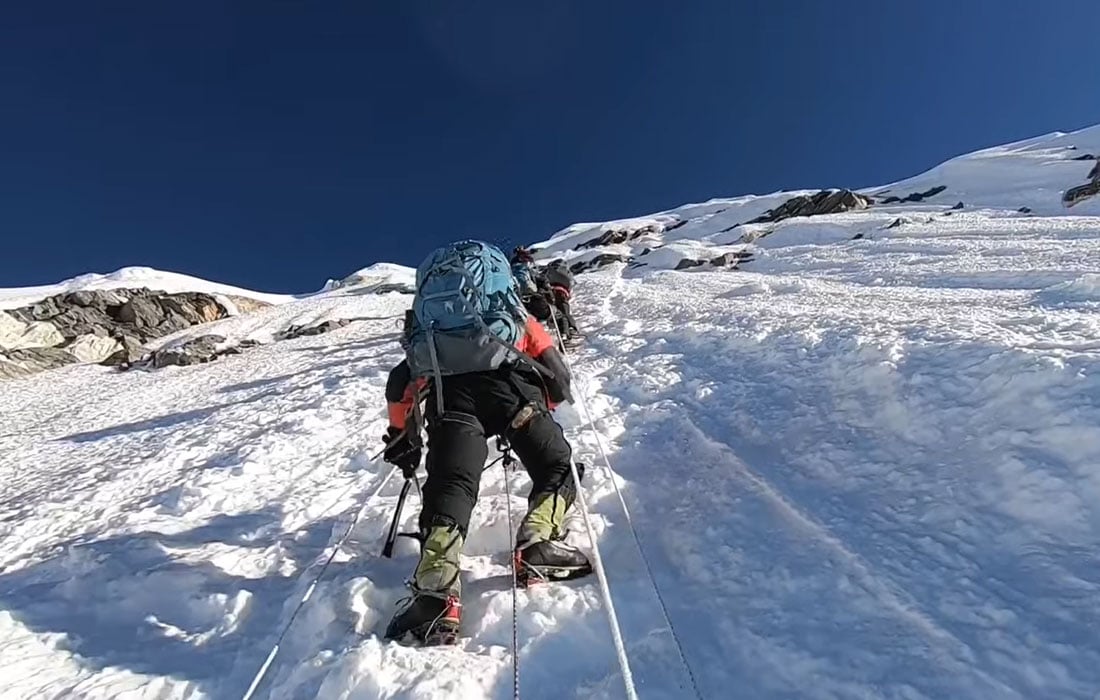
Credit: www.thirdrockadventures.com
Frequently Asked Questions
What Is Peak Climbing?
Peak climbing involves ascending to the summit of a mountain. It’s more challenging than trekking but less technical than mountaineering.
How Do I Start Peak Climbing?
Start by gaining basic climbing skills. Join a mountaineering course and practice on smaller peaks first.
What Gear Is Needed For Peak Climbing?
Essential gear includes climbing boots, harness, helmet, ropes, and ice axes. Proper clothing and safety equipment are also crucial.
Is Peak Climbing Dangerous?
Peak climbing has risks like any adventure sport. Proper training, preparation, and guidance can minimize dangers.
Conclusion
Climbing peaks offers a thrilling and rewarding experience. Every climb challenges your skills and endurance. The breathtaking views make it all worthwhile. Remember to prepare well and stay safe. Each summit you reach is a testament to your determination. The mountains await your next adventure.
Happy climbing!
{ “@context”: “https://schema.org”, “@type”: “FAQPage”, “mainEntity”: [ { “@type”: “Question”, “name”: “What is peak climbing?”, “acceptedAnswer”: { “@type”: “Answer”, “text”: “Peak climbing involves ascending to the summit of a mountain. It’s more challenging than trekking but less technical than mountaineering.” } } , { “@type”: “Question”, “name”: “How do I start peak climbing?”, “acceptedAnswer”: { “@type”: “Answer”, “text”: “Start by gaining basic climbing skills. Join a mountaineering course and practice on smaller peaks first.” } } , { “@type”: “Question”, “name”: “What gear is needed for peak climbing?”, “acceptedAnswer”: { “@type”: “Answer”, “text”: “Essential gear includes climbing boots, harness, helmet, ropes, and ice axes. Proper clothing and safety equipment are also crucial.” } } , { “@type”: “Question”, “name”: “Is peak climbing dangerous?”, “acceptedAnswer”: { “@type”: “Answer”, “text”: “Peak climbing has risks like any adventure sport. Proper training, preparation, and guidance can minimize dangers.” } } ] }
